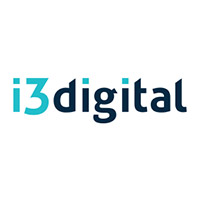In the current climate, there is a big push for increased digitalisation. Teams are expected to do more with fewer resources, challenging Membership organisations globally to adapt quickly to the new norm to meet their overall goals and members’ expectations. In this article, we share with you approaches that other leading Membership organisations are taking to achieve operational efficiencies and drive growth.
Digital Transformation in itself can mean different things to different organisations, however at the heart of it all, is a common approach of hybrid systems, integration and company-wide analytics to enable seamless customer journeys. In reality, it also means that organisational decisions must be made and processes to be examined before the technology even comes into play.
1. Defining how you want to work
With such a lot being written about Agile and other project methodologies at the moment, it’s important to describe how you want to engage as clearly as possible. Digital Transformation can act as a catalyst for wider organisational change. Tell your suppliers if you’ve got the green light to introduce collaborative working but don’t know how to do it. Lots of Digital Transformation enablement partners have experience with this. It is only through asking the right questions, knowing whom you need to talk to and how to provide reassurance to management at key points that the right conditions for agile projects are created.
Similarly, if you want to award a project with a fixed scope and timeframes to a supplier just to increase your departmental output, it helps if suppliers know from the outset. This avoids suppliers trying to ask questions which demonstrate their strategic capability when all you want to know is whether they have availability.
2. Defining how you want to buy
Whether it’s an open tender or a less formal Request for Proposals be clear on how you want suppliers to respond.
We’ve lost count of the number of potential clients who want to have Open Tenders and have initial chemistry sessions… until 30 suppliers want to speak to them within two weeks. If you do want to have exploratory conversations but have to use a tender process, consider engaging before you are constrained by fair and proper procurement processes.
Similarly, if it is a two-part buying process, telling suppliers will mean you don’t get lots of 100-page documents which try to include everything that you could ever want to know at the first stage.
3. Don’t Overscope
Normally Digital Transformation involves software products or agency services that you don’t know that well. It’s important to know when to stop your own scoping. Our experience has been that customers who try to define too much, struggle to achieve anything at all. One project we were involved with a few years ago, had been restarted twice because of over-scoping. The client had 9 definition documents, written over 18 months, covering seven business systems, all spread over 400 pages of A4 (written in size 10 font with not enough pictures). Even a team of geniuses would struggle to work in this way.
A better approach is to make the main requirements as clear as possible. Communicating software versions and what they do will also give experienced transformation partners enough to understand broadly what is needed.
4. Identifying what success looks like
Whether it is leads/sign-ups, sales, operational efficiencies or simply adapting user experience to support a new brand roll-out make it clear. This can be very complex or straightforward. We’ve had clients in the past who have specified targets for ‘channel shift’, where they move sales from telephone supported enquiries to pure web-based. We’ve also had big clients who have simple targets, like increasing market share by 5%. It always helps if goals come with measurable targets.
Some of the time achieving big results like improvements to market share requires lots of partners working together. If suppliers know this early, it makes a big difference in how they suggest engaging with your organisation and supplier network.
5. Be prepared to communicate a budgetary range
Whilst it isn’t always advisable to publish your budgets, it is a good idea to know the ballpark you are in. The alternative might mean that you need to renegotiate budgets after appointing suppliers and potentially having to choose cheaper suppliers previously discounted on quality grounds.
We always try to make sure there is a shared understanding of what the budget is as part of the buying process. There are lots of ways of controlling costs if budgets are tight, such as agreeing on what work can be done by the client-side team, phased deliveries or removing nice to have functionality. This normally forms the basis of a more constructive conversation based on getting optimum value for money.
Top Tip: This gets better value than just asking suppliers to knock 10% off the bill.
In Summary
What makes Digital Transformation projects different from your average digital projects is the number of internal and external stakeholders who are involved in the project process. The reality is that most of the time departments outside of IT and Marketing such as Customer Services, Finance and even Senior Management Teams are kept at arm’s length or consulted and informed. Organisations should always look to take a holistic strategic approach to Digital Transformation, one that involves all internal and external stakeholders, as those without a clear strategy and road map will find it difficult to successfully implement and quickly adapt to the changing consumer landscape.
i3 Digital is an experienced team of straight-talking digital experts, that specialises in delivering integrated digital platforms. Contact us to learn more.










Leave A Comment